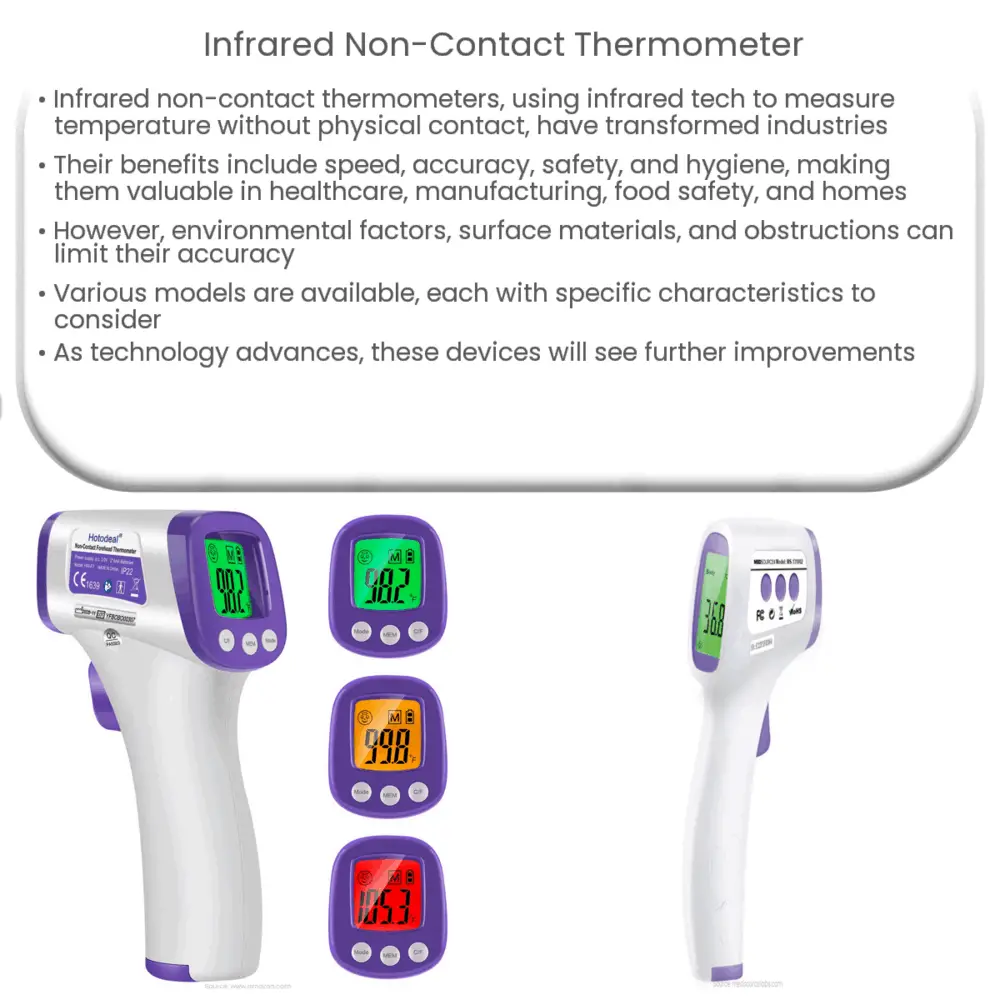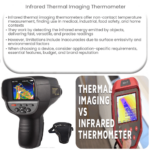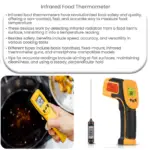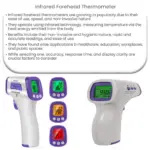Infrared non-contact thermometers provide quick, accurate temperature readings without physical contact, ideal for medical, industrial, and home use.

Infrared Non-Contact Thermometers: Revolutionizing Temperature Measurement
Temperature measurement is an essential aspect of daily life, playing a crucial role in industries, medicine, and households. In recent years, a game-changing innovation in this field has emerged: infrared non-contact thermometers. In this article, we delve into the technology behind these devices, their applications, and benefits.
What is an Infrared Non-Contact Thermometer?
An infrared non-contact thermometer, also known as an IR thermometer, is a device that measures temperature without requiring any physical contact with the object or surface being measured. This is achieved by using infrared technology, which detects the natural radiation emitted by all objects. The thermometer then converts this information into a temperature reading displayed on a digital screen.
How Does an Infrared Non-Contact Thermometer Work?
The primary component of an infrared non-contact thermometer is an infrared sensor, which is typically a thermopile or pyroelectric detector. These sensors are sensitive to the infrared radiation emitted by objects and convert the radiation into an electrical signal. The strength of the electrical signal is proportional to the intensity of the infrared radiation and, consequently, the temperature of the object. The device’s microprocessor then calculates the temperature based on the electrical signal and displays the result on a digital screen.
Applications of Infrared Non-Contact Thermometers
Due to their non-contact nature and speed, IR thermometers have found numerous applications across various sectors:
- Medical: In healthcare settings, infrared non-contact thermometers are used to quickly and accurately measure patients’ body temperatures, helping to identify fevers and other signs of illness. The non-contact nature of these devices is especially advantageous in preventing cross-contamination between patients.
- Industrial: In manufacturing, infrared thermometers are used to monitor the temperature of equipment, machinery, and processes. They enable workers to measure the temperature of hazardous or hard-to-reach objects from a safe distance, reducing the risk of injury and damage.
- Food safety: Food safety regulations require temperature monitoring at various stages of food production, transportation, and storage. Infrared thermometers offer a fast and non-invasive method to ensure that food products are kept at the appropriate temperatures, reducing the risk of spoilage and contamination.
- Home use: In households, infrared non-contact thermometers are used for various tasks, such as checking the temperature of cooking surfaces, monitoring room temperatures, and even measuring body temperatures of family members.
Benefits of Infrared Non-Contact Thermometers
Some of the primary advantages of using infrared non-contact thermometers include:
- Speed: IR thermometers provide near-instantaneous temperature readings, making them ideal for situations that require rapid measurements.
- Accuracy: Due to their advanced sensor technology, infrared thermometers can provide accurate temperature readings within a specific range and under appropriate conditions.
- Safety: The non-contact nature of these devices allows users to measure temperatures from a distance, reducing the risk of injury and damage associated with traditional contact thermometers.
- Hygiene: Since they do not require physical contact with the object being measured, infrared thermometers can help prevent cross-contamination, particularly in medical and food safety applications.
Choosing the Right Infrared Non-Contact Thermometer
With various models available on the market, selecting the right infrared non-contact thermometer can be challenging. Here are some factors to consider:
- Temperature Range: Ensure that the thermometer’s temperature range suits your specific application. Different models cater to different temperature ranges, so choose one that meets your requirements.
- Accuracy: Infrared thermometers usually display their accuracy specifications, typically expressed as a ± value. Select a device with an accuracy level appropriate for your needs.
- Emissivity: Emissivity is a measure of how efficiently an object emits infrared radiation. Some infrared thermometers have adjustable emissivity settings, allowing for more accurate measurements on a wider range of materials.
- Distance-to-Spot Ratio: This ratio represents the relationship between the distance from the thermometer to the object and the diameter of the area being measured. A higher distance-to-spot ratio allows for more accurate temperature measurements from a greater distance.
Limitations of Infrared Non-Contact Thermometers
While infrared non-contact thermometers offer numerous advantages, they also have certain limitations:
- Environmental Factors: Ambient temperature, humidity, and air currents can affect the accuracy of infrared thermometers. It is essential to use these devices in a controlled environment or account for these factors when interpreting the results.
- Surface Material: Reflective surfaces or surfaces with low emissivity can result in inaccurate readings. In such cases, using a thermometer with adjustable emissivity or applying a non-reflective material to the surface can help improve accuracy.
- Obstructions: Infrared thermometers require a clear line of sight to the object being measured. Any obstruction, such as dust, smoke, or glass, can interfere with the infrared radiation and lead to inaccurate readings.
Conclusion
Infrared non-contact thermometers have revolutionized temperature measurement across various industries and applications. Their speed, accuracy, safety, and hygiene benefits make them a valuable tool in healthcare, manufacturing, food safety, and home use. By understanding the technology behind these devices, their applications, benefits, and limitations, users can make informed decisions and choose the right infrared non-contact thermometer for their needs.
As technology continues to advance, we can expect further improvements in infrared thermometers, including increased accuracy, wider temperature ranges, and more user-friendly features. As a result, these devices will continue to play an essential role in temperature measurement for the foreseeable future.




